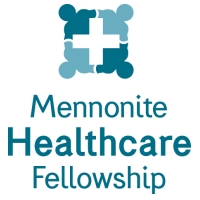Mennonite Health Journal
Articles on the intersection of faith and health
Editorial: Coming Together in Christ
Paul D. Leichty
from Mennonite Health Journal, Volume 14, No. 3, October 2012
This quarter, I am leading a Sunday School class in a study of the New Testament Epistle to the Ephesians. I am continually fascinated and inspired by the vision stated most succinctly in Ephesians 1:22: And he [God] has put all things under his [Jesus’] feet and has made him the head over all things for the church…(NRSV)
The current election campaigning in the United States is just one of the more obvious examples of the many divisions in our world today. Divisions are all around us in matters of race, religion, culture, world view, economic status, philosophy of government, and more. Within the church, the divisions are often painful ones, over a variety of issues such as worship styles, leadership roles, homosexuality, and the relative importance of personal and social witness.
In the healthcare field, there have also been divisions. Historically, some of those divisions have been relatively simple to define, for example, between physicians and nurses. Many years ago, Mennonites sought to address those divisions, in part, by meeting together as Mennonite Medical Association and Mennonite Nurses Association for a joint annual convention.
Yet, there was a growing realization that the divisions were growing much more complex. A myriad of healthcare specialties have developed and blossomed in the past generation. An explosion of healthcare knowledge means that none of us have all of the knowledge and skills to address the total healthcare needs of those we serve. Thus we rely on medical specialists, therapists of various sorts, and a wide range of nursing caregivers. We then employ people to administer this complex network of care, others to facilitate payment for the care, and still others to do research into new therapies and interventions.
Not only do we now have a vast network of often competing specialties, but we also have competing philosophies of healthcare, some of which have acquired the label of “alternative medicine.” Others see the need for more emphasis on diet and exercise for our overall health. All of this means that divisions can develop based on the personal experience of what seemed to work (or not work) for the individual person.
How do we sort out this complex situation? How do we deal with the divisions that we see around us? How do we do what is best for both the individuals we personally serve as well as the larger society? Is it possible to bring unity out of this cacophony of competing voices?
The writer of Ephesians has the audacity to claim that even the most basic divisions of human society are coming together. How is it possible that there is some fundamental unity underlying all of these many divisions? The answer lies in faith. This faith is not in an ideology or philosophy or system, not even in a religious system with its laws and commandments. Instead, the fundamental unity of all humanity is happening in Jesus Christ.
Jesus Christ becomes our touchstone for unity because in him we see the fundamental principles for unity. Unity does not come, as many in our world believe, by the stronger force overwhelming and eliminating the weaker. A true unity is not achieved by the superior power of political, economic, and military might. Quite the opposite is true. It is the power of unconditional love which draws people together. Jesus lived his life in service to others, giving his whole life even unto the most painful death on a cross, so that God’s uniting love can be made known to all. The cross turns rebels into worshipers, enemies into friends, combatants into fellow citizens under God’s unified ruling authority.
The Gospel proclaims that in Jesus Christ, it’s happening. A new people are forming, beginning to present a model for the world to see. That model is the church. Ephesians 1:22 says that Jesus has been made head over all things for the church . The church is to be both the example and proclaimer of this unification process in Christ.
That is why the formation of Mennonite Healthcare Fellowship is so important. MHF is an expression of our Christian faith in the arena of healthcare. MHF represents our belief that when we come together as citizens under God’s rule for dialogue and discernment, outreach and service, caring for each other and the world, we are taking part in that uniting of all things under the feet of Jesus.
About the author
 Paul D. Leichty, M.Div. was the first Executive Director of Mennonite Healthcare Fellowship (MHF), serving from Sept. 2011 through May 2020. Paul has served as a pastor, church musician, computer support person, disabilities advocate, and administrator/organizer of a number of church-related ministries. In addition to responsibilities at MHF, Paul is Executive Director of Congregational Accessibility Network and was formerly Director of User Services at Mennonite.net. He is a member of Agape Fellowship of the Mennonite Church in Williamsport, Pennsylvania where he lives with his wife, Twila Charles Leichty.
Paul D. Leichty, M.Div. was the first Executive Director of Mennonite Healthcare Fellowship (MHF), serving from Sept. 2011 through May 2020. Paul has served as a pastor, church musician, computer support person, disabilities advocate, and administrator/organizer of a number of church-related ministries. In addition to responsibilities at MHF, Paul is Executive Director of Congregational Accessibility Network and was formerly Director of User Services at Mennonite.net. He is a member of Agape Fellowship of the Mennonite Church in Williamsport, Pennsylvania where he lives with his wife, Twila Charles Leichty.

